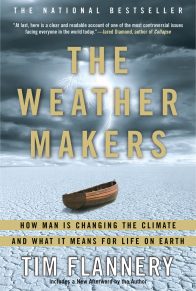“An informative tour of promising multi-pronged approaches to one of humanity’s biggest challenges. Flannery’s solution-focused quest is especially timely.” —Booklist
“Flannery argues for renewed optimism in human capabilities to reverse the destabilizing effects of climate change. For years, the author has been in the forefront of spreading the warning of climate change’s dire consequences to a broad audience . . . Flannery crisply outlines what is now known and conjectured about the human influence on climate change . . . and he makes an intriguing case for the capture and storage of the byproducts of the damage already done. A sharp summary of energy potentialities, where the good and the bad reside in human hands, hearts, and minds.” —Kirkus Reviews
“The book does a remarkably good job of arguing that there is still hope for averting catastrophic climate change . . . [Flannery] fully acknowledges the steep challenges and serious obstacles we face. So when he affirms that a path to averting catastrophic climate change remains in place, we know the conclusion is not reached capriciously . . . Flannery closely examines the relevant developments in renewable energy; he describes what is already being accomplished, and how these technologies might be scaled up in the years ahead . . . Flannery’s exploration of the climate change problem is comprehensive. He covers everything from the underlying basic science to the nitty-gritty details of prospective solutions. The book is at its best when laying out the latter . . . What Flannery provides—a convincing defense for the position that a path to averting catastrophic climate change still exists—is invaluable.” —Michael Mann, Los Angeles Review of Books
“I’m glad Tim Flannery has written this book, and I hope a lot of policymakers get to read it ahead of the Paris meeting. Above all, it will help them appreciate that against the effort and money demanded by carbon removal, deep and early emissions cuts are a cakewalk.” —Independent Australia
“Timely . . . provide[s] invaluable background to the Paris talks.” —Guardian (UK)













